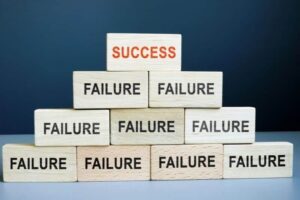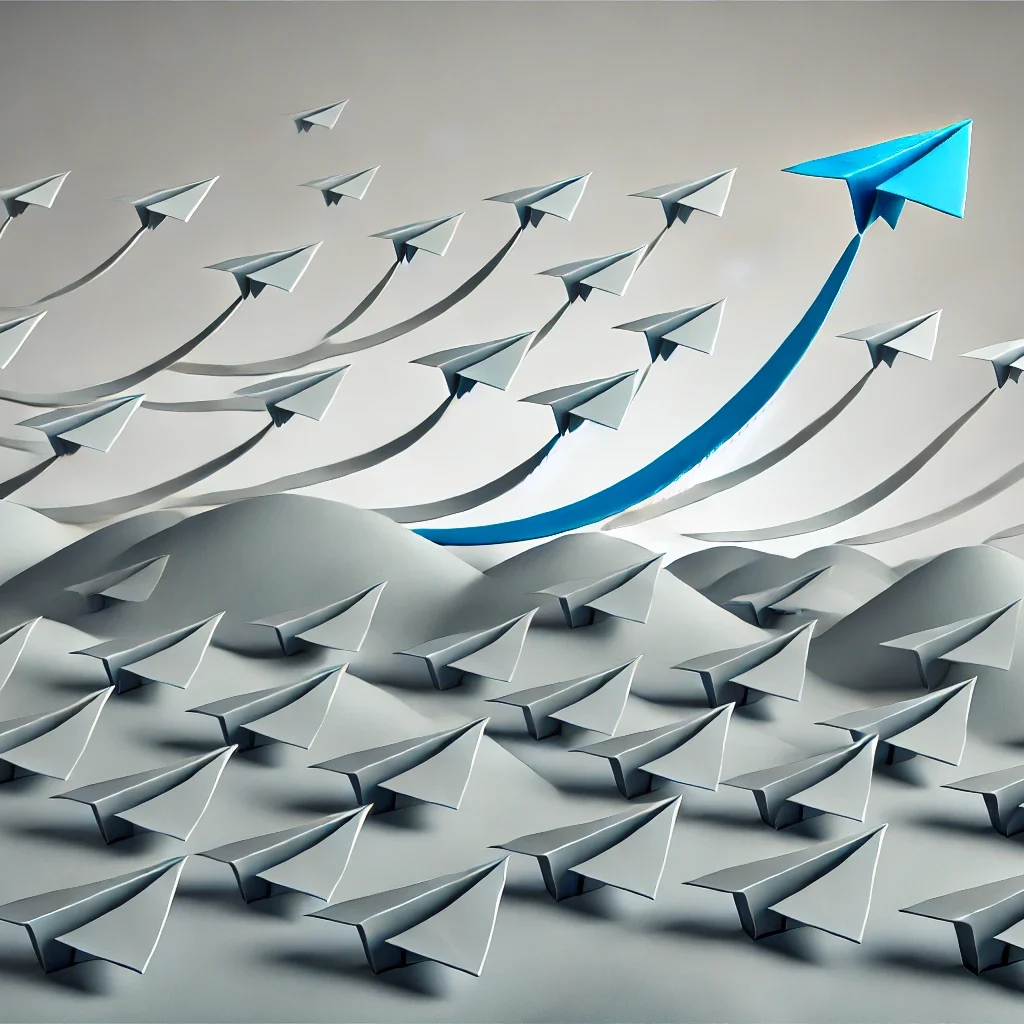Failure. It’s a word that can fill anyone with dread, yet in the world of innovation, it’s almost a rite of passage. Innovators understand that failure isn’t the end; it’s often the beginning of a breakthrough. Those who have harnessed the power of failure know that setbacks can propel us toward creativity, resilience, and lasting success. But how exactly do innovators turn failure into a tool for growth? Let’s explore the power of failure, the lessons it offers, and how each misstep can pave the way for the next big idea.
 The Gift of Failure: Redefining Success
The Gift of Failure: Redefining Success
Failure isn’t always pleasant, but it’s often necessary. The fear of failure holds many people back from taking risks, especially in professional and creative spaces. But true innovators understand that failure is just a stepping stone. A “failure” doesn’t mean that you weren’t capable or that your idea was flawed. Instead, it reveals areas to improve, potential paths to explore, and lessons to embrace.
I’ve encountered this in my own career, both as an entrepreneur and as a keynote speaker on creativity and innovation. There were times when projects failed, ideas didn’t pan out, and business goals didn’t align. But each setback taught me something invaluable, and eventually, I came to see failure not as a flaw but as a source of strength and insight. Embracing failure allows us to take the creative risks that lead to breakthrough ideas, a sentiment explored in this Amazon book on failure and resilience.
“I have not failed. I’ve just found 10,000 ways that won’t work.” – Thomas Edison
How Failure Inspires Innovation
Many of history’s greatest inventions were born from failed attempts. Think of Thomas Edison’s journey to inventing the lightbulb. He didn’t succeed in a single attempt; instead, he famously “found 10,000 ways that won’t work” before discovering the one that did. Innovators see setbacks as part of the journey, not as the end of it.
Transforming Setbacks into Insight
When we view failure as feedback rather than a defeat, we create room for growth and ingenuity. Here’s how setbacks can become a powerhouse for innovation:
- Problem Identification: Failure exposes the weak spots in an idea, revealing aspects that need improvement. When something doesn’t work, it points out where adjustments are necessary, leading to a more robust solution.
- Increased Resilience: Learning to accept and recover from failure builds resilience. Innovators who bounce back quickly from failures have the stamina to keep pushing forward, even when the going gets tough.
- Creative Problem-Solving: Setbacks force us to find alternate solutions, often sparking unexpected creativity. This flexibility is what drives innovation forward.
Failures are not signs of inadequacy; they are signposts, guiding us toward better, stronger, more effective outcomes. The innovators who understand this truth are those who change the world.
Professional Examples of Turning Failure into Success
The Journey of James Dyson
James Dyson, the British inventor behind Dyson vacuum cleaners, is a prime example of the power of failure. Dyson famously created over 5,000 prototypes before his bagless vacuum design worked. That’s over 5,000 opportunities to give up—yet he didn’t. Instead, he used each failed attempt as a lesson, refining his design and discovering new ways to improve it. Dyson’s setbacks didn’t prevent his success; they fueled it. Today, Dyson’s products are renowned for their innovative design and effectiveness, proving that failure was an essential part of his journey to success.
 My Own Story: Learning from Setbacks
My Own Story: Learning from Setbacks
In my own career, I’ve faced plenty of failures. From business ventures that didn’t pan out to ideas that fell flat, each setback could have stopped me. But instead, I treated each one as a lesson. One specific example stands out: an early business idea that I was passionate about but that ultimately failed. The project was met with challenges I didn’t anticipate, and it ended up costing me both time and money.
However, the experience taught me how to navigate complex business landscapes, adapt quickly, and strengthen my resilience. These lessons became the foundation for the work I do now, where I help organizations and individuals harness their creative potential. That so-called “failure” turned into a blueprint for future success, and it’s a story I often share with audiences as a keynote speaker to help them see setbacks as building blocks rather than barriers. If you’d like to learn more about the strategies I use to transform setbacks into successes, here’s a link to my blog on innovation.
“Success is not final, failure is not fatal: It is the courage to continue that counts.” – Winston Churchill
Why Setbacks Are Crucial for Personal Growth
Failure isn’t limited to professional innovation—it’s a tool for personal growth too. We learn so much about ourselves through setbacks. Failure can reveal our strengths, weaknesses, and capacity for resilience. We don’t grow in our comfort zones; we grow when we’re pushed to the edge and have to adapt.
Turning Personal Setbacks into Superpowers
Setbacks often lead to self-discovery, teaching us what we’re truly capable of and how to develop a growth mindset. This article on transforming setbacks into superpowers explores how challenges can be transformative for personal development. Each challenge becomes an opportunity to dig deeper and find solutions that wouldn’t have been visible without adversity.
How to Harness the Power of Failure
Turning failure into success is an art, but it’s one that anyone can learn with the right mindset and strategies. Here are some practical steps to turn setbacks into tools for growth:
1. Reframe Failure as Feedback
When you encounter a setback, look at it objectively. Instead of seeing it as the end, view it as a source of information. What went wrong? What did you learn? This shift in perspective is powerful, enabling you to approach the situation with a problem-solving mindset.
2. Embrace a Growth Mindset
A growth mindset, which sees failure as a part of the learning process, is essential for transforming setbacks into success. By believing that skills and talents can be developed, you give yourself permission to take risks and to view failures as valuable stepping stones.
3. Persist with Purpose
Resilience is about staying the course, even when things get difficult. Just like Dyson persisted through thousands of prototypes, staying committed to your goals despite setbacks keeps you moving forward. Each failure brings you one step closer to your ultimate success.
For a deeper look at fostering a culture of resilience and creativity in organizations, check out my article on hiring an innovation keynote speaker.
Success: The Turning Point of Failure
The beauty of failure lies in the moment it transforms into success. It’s that turning point when all the trials and lessons suddenly come together, and the once-overwhelming setback becomes the foundation of something greater. In my work with clients, I’ve seen this turning point time and again. Whether it’s a company reimagining its products after a failed launch or an individual finding purpose after a career setback, the climax of failure is the realization that each misstep has led to something valuable.
FAQs
1. How can failure lead to success?
Failure leads to success by offering valuable lessons, highlighting areas of improvement, and fostering resilience. Innovators use setbacks to refine their ideas and approaches, often leading to breakthroughs.
2. What are examples of famous failures that led to innovation?
James Dyson’s vacuum cleaner, which took over 5,000 prototypes, and Thomas Edison’s lightbulb are classic examples. Each failure served as a lesson, leading to refined designs and eventual success.
3. How do I reframe failure as a learning opportunity?
Start by viewing failure as feedback rather than defeat. Ask what you can learn from the experience and how it can improve your future efforts. This mindset shift is key to using setbacks constructively.
4. Why is resilience important in innovation?
Resilience enables innovators to stay focused, adapt, and push through challenges. Without resilience, setbacks can discourage progress, but with it, they fuel growth and creative problem-solving.
5. How can I use a growth mindset to handle failure?
A growth mindset sees skills as developable through effort. Embrace challenges, view setbacks as learning opportunities, and stay open to improvement. This mindset transforms failure into a tool for growth.
Conclusion
Failure is far from a dead-end—it’s a pathway to discovery, growth, and ultimately, success. Innovators and leaders who harness the power of failure understand that each setback is a stepping stone. By embracing failure as feedback, fostering resilience, and maintaining a growth mindset, they turn what seems like a defeat into a building block for their next great achievement.
If you’re ready to transform your approach to setbacks and fuel your creative potential, visit Creative Innovation Group and see how I can help you harness the power of failure for lasting success.

